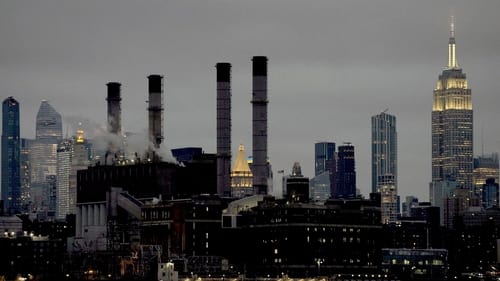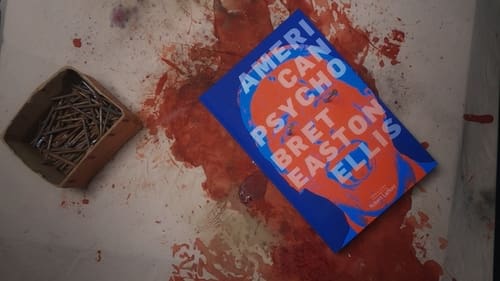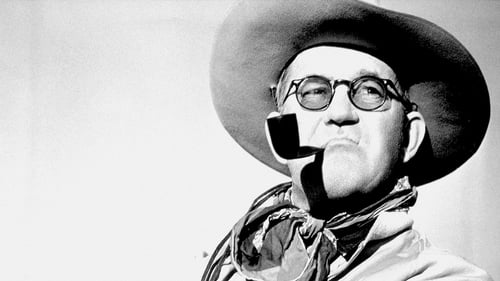
Original Music Composer
In 1945, two young American soldiers, brothers Budd and Stuart Schulberg, are commissioned to collect filmed and recorded evidence of the horrors committed by the infamous Third Reich in order to prove Nazi war crimes during the Nuremberg trials (1945-46). The story of the making of Nuremberg: Its Lesson for Today, a paramount historic documentary, released in 1948.

Writer
In 1945, two young American soldiers, brothers Budd and Stuart Schulberg, are commissioned to collect filmed and recorded evidence of the horrors committed by the infamous Third Reich in order to prove Nazi war crimes during the Nuremberg trials (1945-46). The story of the making of Nuremberg: Its Lesson for Today, a paramount historic documentary, released in 1948.

Director
In 1945, two young American soldiers, brothers Budd and Stuart Schulberg, are commissioned to collect filmed and recorded evidence of the horrors committed by the infamous Third Reich in order to prove Nazi war crimes during the Nuremberg trials (1945-46). The story of the making of Nuremberg: Its Lesson for Today, a paramount historic documentary, released in 1948.

Original Music Composer
The story of the making of Soylent Green, a masterpiece of social science fiction, released in 1973. Directed by Richard Fleischer and starring Charlton Heston and Edward G. Robinson, it deals not with an exogenous threat, such as an extraterrestrial attack, but with the dire consequences of an irreversible environmental catastrophe for which mankind alone is responsible.

Writer
The story of the making of Soylent Green, a masterpiece of social science fiction, released in 1973. Directed by Richard Fleischer and starring Charlton Heston and Edward G. Robinson, it deals not with an exogenous threat, such as an extraterrestrial attack, but with the dire consequences of an irreversible environmental catastrophe for which mankind alone is responsible.

Director
The story of the making of Soylent Green, a masterpiece of social science fiction, released in 1973. Directed by Richard Fleischer and starring Charlton Heston and Edward G. Robinson, it deals not with an exogenous threat, such as an extraterrestrial attack, but with the dire consequences of an irreversible environmental catastrophe for which mankind alone is responsible.

Original Music Composer
In 1991, American Psycho, the third novel by controversial writer Bret Easton Ellis, provoked heated discussions among critics and readers alike; an extraordinarily disturbing book that transported its readers into the mind of Patrick Bateman, a cynical mergers and acquisitions executive obsessed with brands, inconsequential details, pop culture and brutal murder.

Writer
In 1991, American Psycho, the third novel by controversial writer Bret Easton Ellis, provoked heated discussions among critics and readers alike; an extraordinarily disturbing book that transported its readers into the mind of Patrick Bateman, a cynical mergers and acquisitions executive obsessed with brands, inconsequential details, pop culture and brutal murder.

Director
In 1991, American Psycho, the third novel by controversial writer Bret Easton Ellis, provoked heated discussions among critics and readers alike; an extraordinarily disturbing book that transported its readers into the mind of Patrick Bateman, a cynical mergers and acquisitions executive obsessed with brands, inconsequential details, pop culture and brutal murder.

Director

Self - Narrator (voice)
Over a 50-year career and more than a hundred movies, filmmaker John Ford (1894-1973) forged the legend of the Far West. By giving a face to the underprivileged, from humble cowboys to persecuted minorities, he revealed like no one else the great social divisions that existed and still exist in the United States. More than four decades after his death, what remains of his legacy and humanistic values in the memory of those who love his work?

Original Music Composer
Over a 50-year career and more than a hundred movies, filmmaker John Ford (1894-1973) forged the legend of the Far West. By giving a face to the underprivileged, from humble cowboys to persecuted minorities, he revealed like no one else the great social divisions that existed and still exist in the United States. More than four decades after his death, what remains of his legacy and humanistic values in the memory of those who love his work?

Writer
Over a 50-year career and more than a hundred movies, filmmaker John Ford (1894-1973) forged the legend of the Far West. By giving a face to the underprivileged, from humble cowboys to persecuted minorities, he revealed like no one else the great social divisions that existed and still exist in the United States. More than four decades after his death, what remains of his legacy and humanistic values in the memory of those who love his work?

Director
Over a 50-year career and more than a hundred movies, filmmaker John Ford (1894-1973) forged the legend of the Far West. By giving a face to the underprivileged, from humble cowboys to persecuted minorities, he revealed like no one else the great social divisions that existed and still exist in the United States. More than four decades after his death, what remains of his legacy and humanistic values in the memory of those who love his work?

Screenplay

Director

Director
Paris, April 1994. Young freelance journalist Antoine Rives is making a report on Westerners who have been repatriated from Rwanda, fleeing the massacres. He meets Clément, a student of Hutu origin whose Tutsi fiancée Alice hasn’t been able to leave Rwanda. Antoine convinces Clément to go back with him to look for Alice, and to let him film the journey. Their pact soon becomes untenable as they find themselves thrown into chaos.
This is a journey through horror during which a young man’s First World illusions are stripped away as he wakes up to human tragedy.

Original Music Composer
Jean-Christophe Klotz was a cameraman for a French broadcast news service in 1996 when he was sent to Rwanda to cover the growing violence between ruling Hutus and rival Tutsi tribespeople. What Klotz saw profoundly shocked him, as bodies littered the sides of the roads and bloody massacres became the order of the day. In between interviews with government officials and United Nations forces vainly struggling to contain the violence, Klotz captured the mayhem on film, believing that if world leaders saw what was happening, they would step forward to stop the violence. When Klotz was injured while filming an attack, he was sent back to Paris, and while his footage was aired, French forces only belatedly arrived, ultimately doing more to protect those who caused the massacre than bringing them to justice. Years later, Klotz used his footage to help identify some of the victims of the killings, and in 2006 he returned to Rwanda to visit the nation after the violence had ceased.

Director
Jean-Christophe Klotz was a cameraman for a French broadcast news service in 1996 when he was sent to Rwanda to cover the growing violence between ruling Hutus and rival Tutsi tribespeople. What Klotz saw profoundly shocked him, as bodies littered the sides of the roads and bloody massacres became the order of the day. In between interviews with government officials and United Nations forces vainly struggling to contain the violence, Klotz captured the mayhem on film, believing that if world leaders saw what was happening, they would step forward to stop the violence. When Klotz was injured while filming an attack, he was sent back to Paris, and while his footage was aired, French forces only belatedly arrived, ultimately doing more to protect those who caused the massacre than bringing them to justice. Years later, Klotz used his footage to help identify some of the victims of the killings, and in 2006 he returned to Rwanda to visit the nation after the violence had ceased.















